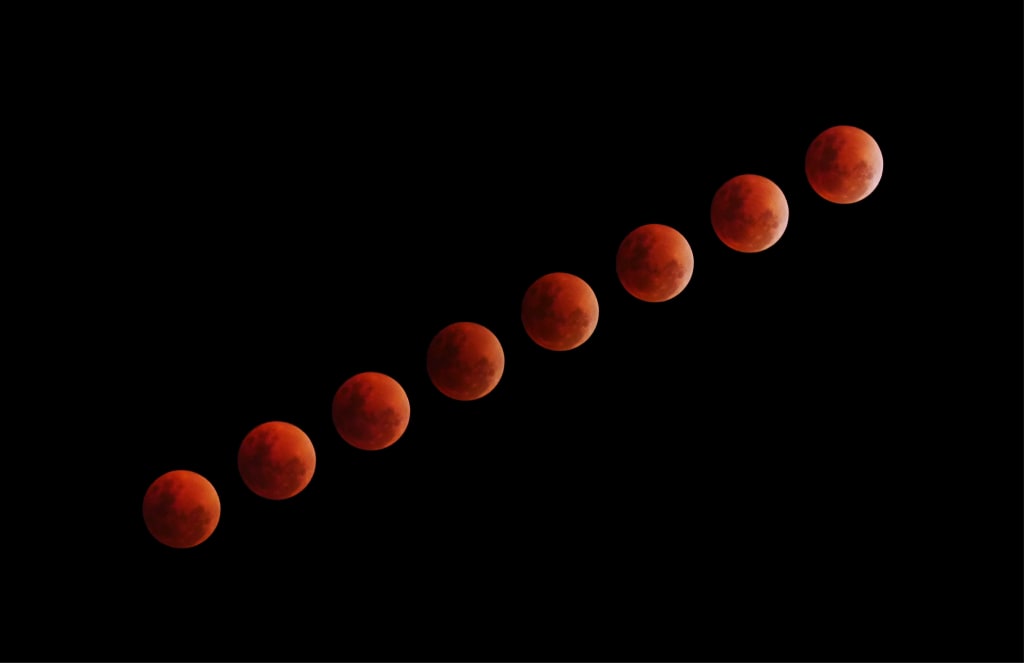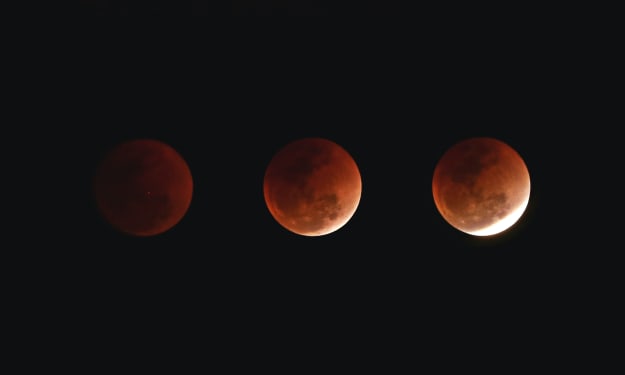"Moons of the Red Planet: Phobos and Deimos Unveiled."
The fact that Mars has two moons, and their names are Phobos and Deimos.

Introduction:
In the cosmic dance of our solar system, Mars, the fourth planet from the Sun, boasts two enigmatic companions—its moons, Phobos and Deimos. These celestial bodies, though much smaller than Earth's moon, play a significant role in the Martian night sky. In this exploration, we delve into the intriguing world of Phobos and Deimos, unraveling their mysterious origins, unique characteristics, and the role they play in the celestial narrative of the Red Planet.
Chapter 1: The Martian Duo: Phobos and Deimos.
Mars, often referred to as the "Red Planet," is not a solitary wanderer through the cosmic expanse. It shares its celestial realm with two moons, Phobos and Deimos, discovered in the 19th century. Named after the sons of the Greek god Ares, who corresponds to the Roman god Mars, these moons add a captivating dimension to the Martian cosmic stage.
Chapter 2: Phobos - The Fearful One
Phobos, the larger and closer of the two Martian moons, orbits the Red Planet at an average distance of just over 9,000 kilometers. Its name, derived from the Greek word for fear, reflects the ominous presence it might have in the Martian night sky. Phobos is an irregularly shaped moon with a length of about 22.2 kilometers, making it one of the smallest moons in our solar system.
Phobos' proximity to Mars is unique, taking only about 7 hours and 39 minutes to complete one orbit. This swift orbit means that Phobos rises in the west, moves quickly across the Martian sky, and sets in the east, completing its celestial journey multiple times in a single Martian day.
Chapter 3: Deimos - The Terror.
Deimos, the smaller and more distant of Mars' moons, orbits at an average distance of approximately 23,460 kilometers. It is even smaller than Phobos, with a diameter of about 12.4 kilometers. The name Deimos, also of Greek origin, means terror or dread, echoing the theme of fear associated with its sibling moon Phobos.
Deimos takes about 30.3 hours to complete one orbit around Mars, making its journey a more leisurely progression across the Martian sky. Its orbital characteristics contribute to a slower rise and set, contrasting with the swift motion of Phobos.
Chapter 4: Origins Shrouded in Mystery.
The origins of Phobos and Deimos remain a subject of scientific inquiry and speculation. While the most widely accepted hypothesis suggests that these moons are captured asteroids or objects from the Kuiper Belt, some mysteries persist.
The irregular shapes, low densities, and unusual orbital characteristics of Phobos and Deimos have led scientists to consider alternative theories. One such hypothesis proposes that Phobos and Deimos may be remnants of a larger body that was shattered by a celestial collision, and the moons we observe today are fragments that coalesced from the debris.
Chapter 5: Captivating Features of Phobos.
Despite their diminutive size, Phobos and Deimos hold a wealth of fascination for astronomers and planetary scientists. Phobos, with its irregular shape and heavily cratered surface, presents an intriguing landscape. One of the most prominent features on Phobos is the Stickney crater, a large impact crater that spans about 9 kilometers and is nearly half the moon's diameter.
The curious grooves and striations on Phobos' surface have also puzzled scientists. These features, which appear as long parallel lines, may be the result of stress fractures caused by the tidal forces exerted by Mars.
Chapter 6: Enigmatic Deimos.
Deimos, while smaller and less cratered than Phobos, possesses its own enigmatic qualities. Its surface is relatively smooth, suggesting a younger age compared to Phobos. However, the precise composition and origin of the material that forms Deimos' surface remain areas of active research.
Deimos' lack of prominent surface features, such as large craters, raises questions about the processes that have shaped its landscape over time. The understanding of Deimos' geology provides valuable insights into the history of Martian moons and the broader dynamics of the inner solar system.
Chapter 7: Tidal Forces and Orbital Evolution.
The gravitational interaction between Mars and its moons has significant implications for their future. The tidal forces exerted by Mars are gradually altering the orbits of Phobos and Deimos, causing them to move slowly inward. Scientists predict that, in the distant future, Phobos will reach its Roche limit—the point at which tidal forces exceed the moon's gravitational self-binding—and disintegrate, forming a ring around Mars.
Deimos, on the other hand, is gradually moving away from Mars due to tidal interactions. This orbital evolution adds an extra layer of complexity to the study of these Martian moons, highlighting the dynamic interplay between celestial bodies in our solar system.
Chapter 8: Moons as Exploration Targets.
Phobos and Deimos have not only captured the interest of scientists but also represent potential targets for future exploration missions. The proximity of these moons to Mars makes them accessible targets for robotic missions, offering opportunities to study their composition, origins, and the broader context of the Martian system.
Proposed missions include sample return missions, where spacecraft would collect samples from the surface of Phobos or Deimos and return them to Earth for detailed analysis. Such missions hold the promise of unlocking further mysteries about the Martian moons and their connection to the Red Planet.
Conclusion:
As we peer into the night sky of Mars, the presence of Phobos and Deimos adds a celestial ballet to the Red Planet's cosmic narrative. These two moons, with their mysterious origins, captivating features, and dynamic orbital evolution, beckon scientists and dreamers alike to unravel the enigma they bring to our understanding of Mars and the broader solar system. Whether as remnants of a primordial collision or captured asteroids, Phobos and Deimos continue to cast their spell, inviting us to explore the intricacies of the Red Planet and the celestial companions that accompany it on its cosmic journey.





Comments
There are no comments for this story
Be the first to respond and start the conversation.